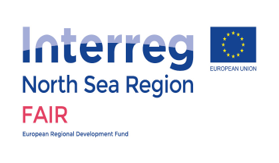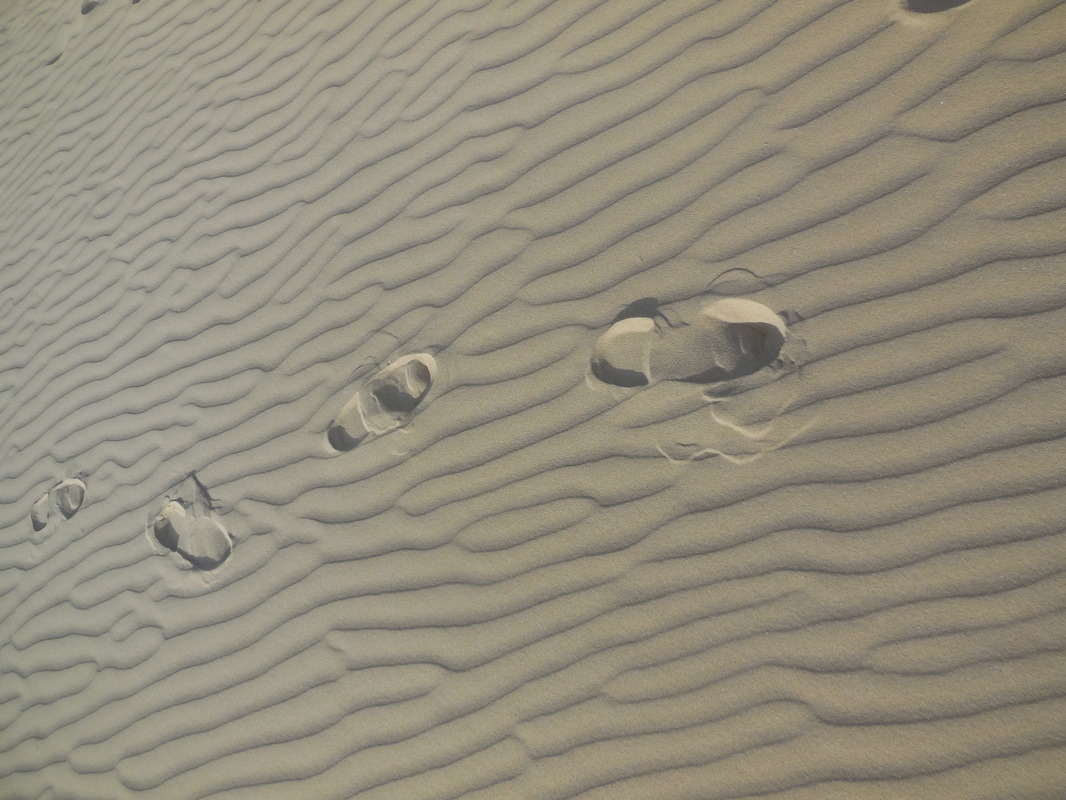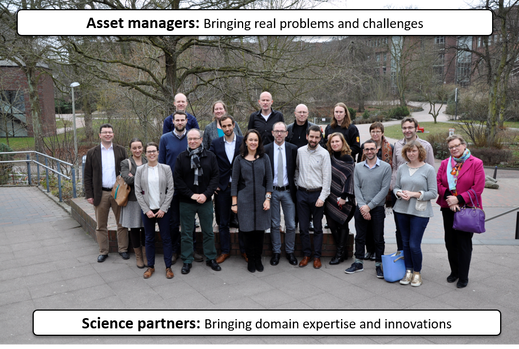FAIR FLOOD INFRASTRUCTURE ASSET MANAGEMENT AND INVESTMENT IN RENOVATION, ADAPTATION AND MAINTENANCE
Output summary
|
The project website is here and includes: FAIR: Extended summary FAIR: End Report 'Adaptive asset management for flood protection' FAIR: a knowledge agenda for 2020 and beyond FAIR: factsheet Pilot Flood Protection Hollandse IJssel Pilot Flood Protection gates Hamburg Pilot Helsingborg Pilot renewing sea dike Middelkerke Pilot Ribe polder Policy Brief English, German Many conference and seminar presentations available to share Contact For further information contact Paul Sayers ([email protected]). |
Published journal papers
Pathirana, A.; den Heijer, F; Sayers, P.B (2021). Water Infrastructure Asset Management Is Evolving. Infrastructures 2021, 6, 90. https://doi.org/10.3390/ infrastructures6060090 Sayers, P., Gersonius, B., den Heijer, F., Klerk, W.J., Fröhle, P., Jordan, P., Ciocan, U.R., Rijke, J., Vonk, B. and Ashley, R., (2021). Towards adaptive asset management in flood risk management: A policy framework. Journal of Water Security, 12, p.100085. Vonk, B., Klerk, W.J., Fröhle, P., Gersonius, B., den Heijer, F., Jordan, P., Radu Ciocan, U., Rijke, J., Sayers, P. and Ashley, R., 2020. Adaptive Asset Management for Flood Protection: The FAIR Framework in Action. Journal of Infrastructures 2020, 5(12), 109; https://doi.org/10.3390/infrastructures5120109 Gersonius, B., Vonk, B., Ashley, R.M., den Heijer, F., Klerk, W.J., Manojlovic, N., Rijke, J., Sayers, P. and Pathirana, A., 2020. Maturity Improvements in Flood Protection Asset Management across the North Sea Region. Journal of Infrastructures, 5(12), p.112. |
Policy BRIEF
Collectively EU Member States invest an average of €3 billion per year on flood protection infrastructure. But a combination of climate and socio-economic change is increasing the annual average damage caused by flooding. Complex and difficult decisions will need to be taken in response to these threats, especially in coastal regions, as rising sea levels challenge the sustainability of existing policies and plans. An improved approach to the planning, design and management of new and existing flood protection assets will be central to addressing this challenge.
Significant new ideas and methods are being developed to ensure best value asset management options are identified for both existing and new infrastructure. However, their alignment with socioeconomic policies and supporting governance systems is often neglected.
The FAIR project brings together flood protection asset owners, operating authorities and researchers from across the North Sea Region (NSR) to share the policy, practice and emerging science of asset management and identifies four priority policy recommendations that respond to these challenges:
1. Break-free of the silo: Align multiple planning processes within, and beyond, flood management;
2. Mind the gap: Link strategic planning and operational processes through a tactical handshake;
3. Prepare for change: Develop flexible strategies and asset designs that can be adapted to meet changing requirements in future;
4. Make space for innovation: Embrace and manage risk to support the development of innovative solutions.
Outputs
The Policy Brief, including more discuss and examples, can be downloaded here
Significant new ideas and methods are being developed to ensure best value asset management options are identified for both existing and new infrastructure. However, their alignment with socioeconomic policies and supporting governance systems is often neglected.
The FAIR project brings together flood protection asset owners, operating authorities and researchers from across the North Sea Region (NSR) to share the policy, practice and emerging science of asset management and identifies four priority policy recommendations that respond to these challenges:
1. Break-free of the silo: Align multiple planning processes within, and beyond, flood management;
2. Mind the gap: Link strategic planning and operational processes through a tactical handshake;
3. Prepare for change: Develop flexible strategies and asset designs that can be adapted to meet changing requirements in future;
4. Make space for innovation: Embrace and manage risk to support the development of innovative solutions.
Outputs
The Policy Brief, including more discuss and examples, can be downloaded here
JOINT Workshop with the Environment agency UK
Adapting infrastructure assets in practice: Facing up to future challenges
A workshop jointly convened by the Interreg North Sea Region FAIR project and the Environment Agency
As we grapple with an uncertain future, Exeter College, Oxford provided an excellent venue for an enjoyable and informative exchange of ideas and experience on how to deliver adaptation in practice. Although we didn't identify a single sliver point, there was significant consensus on the urgency of the issues to be addressed and what is needed to make real progress. Building upon the four Policy Recommendations from the FAIR project (above) these included:
Common issues
Adaptation is more that simple modifying a flood defence asset – it a process that requires innovative, whole system, longer term thinking. Achieving this relies on recognising:
Prerequisites for progress
To make progress in flood and coastal management we must be better at:
A summary of the workshop, its agenda the presentations and findings can be found here.
A workshop jointly convened by the Interreg North Sea Region FAIR project and the Environment Agency
As we grapple with an uncertain future, Exeter College, Oxford provided an excellent venue for an enjoyable and informative exchange of ideas and experience on how to deliver adaptation in practice. Although we didn't identify a single sliver point, there was significant consensus on the urgency of the issues to be addressed and what is needed to make real progress. Building upon the four Policy Recommendations from the FAIR project (above) these included:
Common issues
Adaptation is more that simple modifying a flood defence asset – it a process that requires innovative, whole system, longer term thinking. Achieving this relies on recognising:
- 'Our world is changing faster than our thinking’ – we need to catch up
- Adaptation is a 'people thing' – including individuals, communities, politicians, planners and engineers
- Uncertainty is driven by more than climate change alone – development (local and remote), funding, societal preferences an all have implications for the choices we make.
- Change starts with you! Flood management is in a pivotal position (although not always a leading) to influence change - we must 'break free of our silo – we all have to reach out
Prerequisites for progress
To make progress in flood and coastal management we must be better at:
- Envisioning and visualising the future - Storylines are powerful agents in supporting buy-in to alternative courses of action
- Addressing the hard choices - Adaptation ‘at the edges’ is easy but making hard choices (such as realignment, or investing significantly more today for future flexibility) is more difficult, but these must be addressed head on.
- Recognising adaptation as a purposeful – adaptation is ‘not kicking the can down the road’ – we must take responsibility for the future today
- Accepting adaptation is ‘not a free lunch’ – how much are we willing to pay for future flexibility/reduced lock-in?
- Avoiding the bear trap of 'paralysis by analysis': We have many of the tools. We have much information – lets use it. New data is not always needed (sometimes it may be) – but we can make good decisions with the information we have
- Delivering adaptation is a continuous process - you can’t get ‘adaptation done’ ; adaptation is an ongoing process.
A summary of the workshop, its agenda the presentations and findings can be found here.



